Posts Tagged: Doran Regional Park
Hurrah for the Red, White and Blue! And the Yellow...
Today is the Fourth of July, and what better time to proclaim: "Hurray for the red, white and blue!" And the yellow. On a camping trip last week to Doran Regional Park, Bodega Bay, we admired our neighbors' display of American flags—bordered...
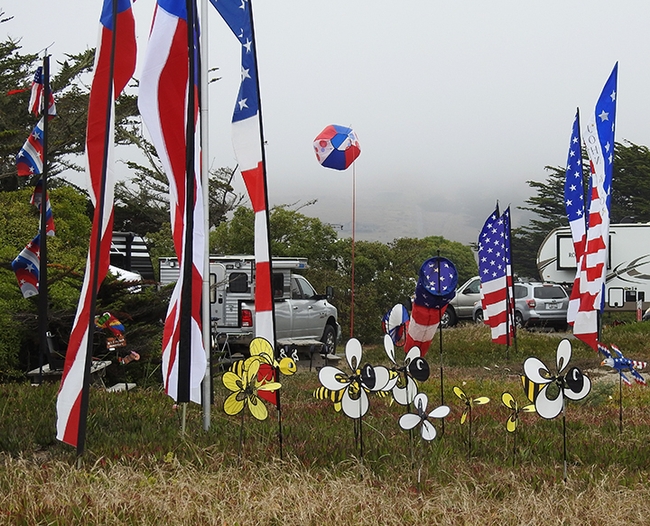
Hurrah for the red, white and blue! And the yellow. Honey bee mobiles were spinning in the wind at a Bodega Bay campsite. (Photo by Kathy Keatley Garvey)
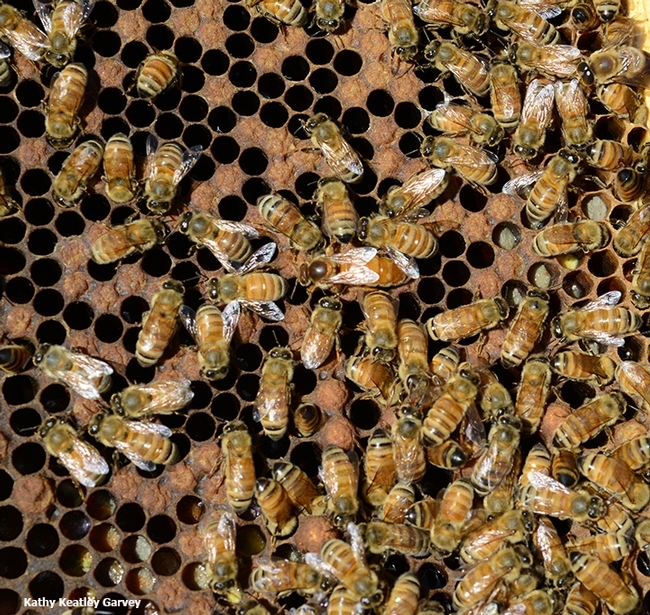
President George Washington liked honey bees--and the honey they produced--for his hoecakes. (Photo by Kathy Keatley Garvey)
Pollinators on the Beach? Fancy Meeting You Here
So you're walking along Doran Regional Park Beach in Sonoma County on Tuesday, Oct. 16 and thinking about the pollinators in your back yard. (Don't we all?) And then: what a delight to see. Apis mellifera (honey bees) and Eristalis tenax,...
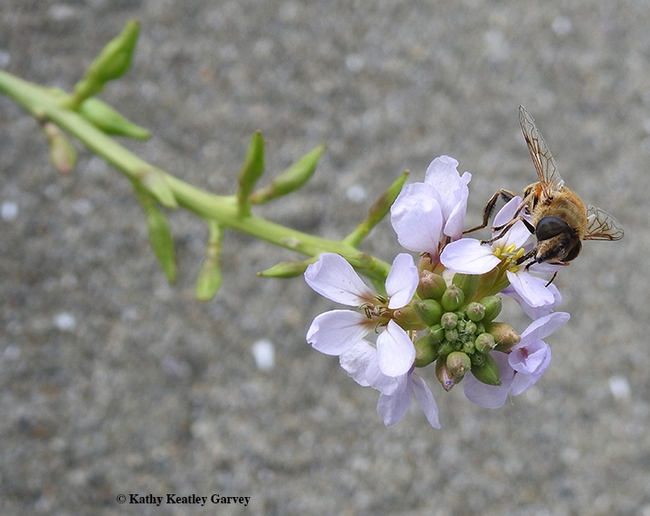
A syrphid or hover fly, Eristalis tenax, nectaring on a sea rocket plant, Cakile maritima, on Oct. 18 at Doran Regional Park Beach, Sonoma. (Photo by Kathy Keatley Garvey)
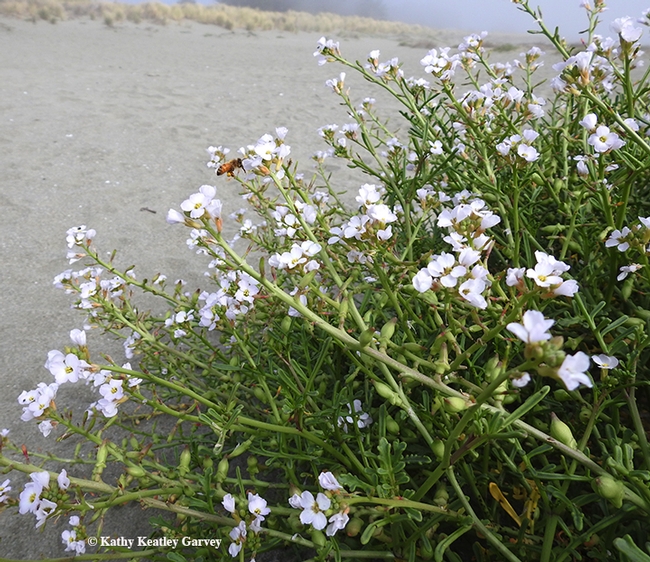
Along with sand castles and beach balls and beach umbrellas, look for pollinators nectaring on sea rocket plants at the beach. Note the honey bee. (Photo by Kathy Keatley Garvey)
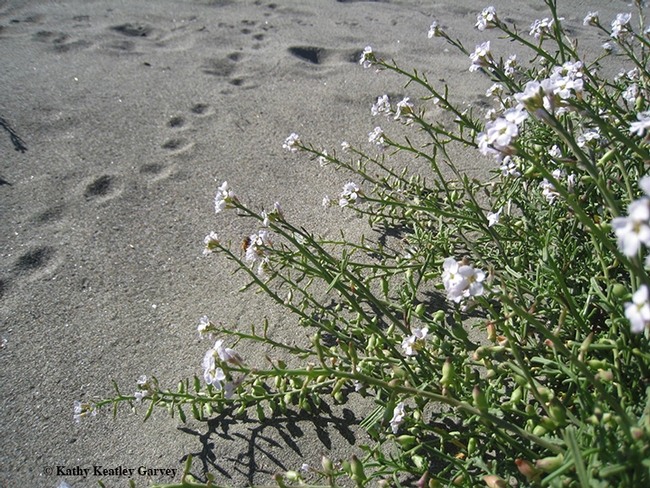
Footprints in the sand? Yes, and bees and other pollinators nectaring on sea rocket. (Photo by Kathy Keatley Garvey)
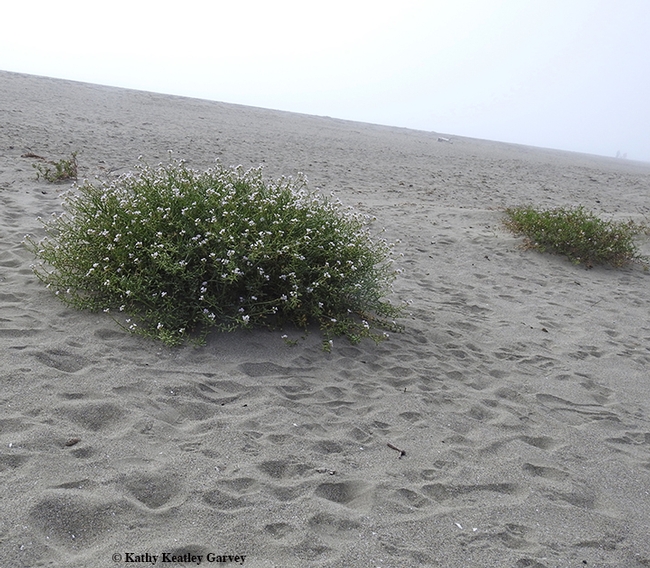
European sea rocket grows in clumps or mounds on sandy beaches along the coastlines of North Africa, western Asia, and North America. (Photo by Kathy Keatley Garvey)

